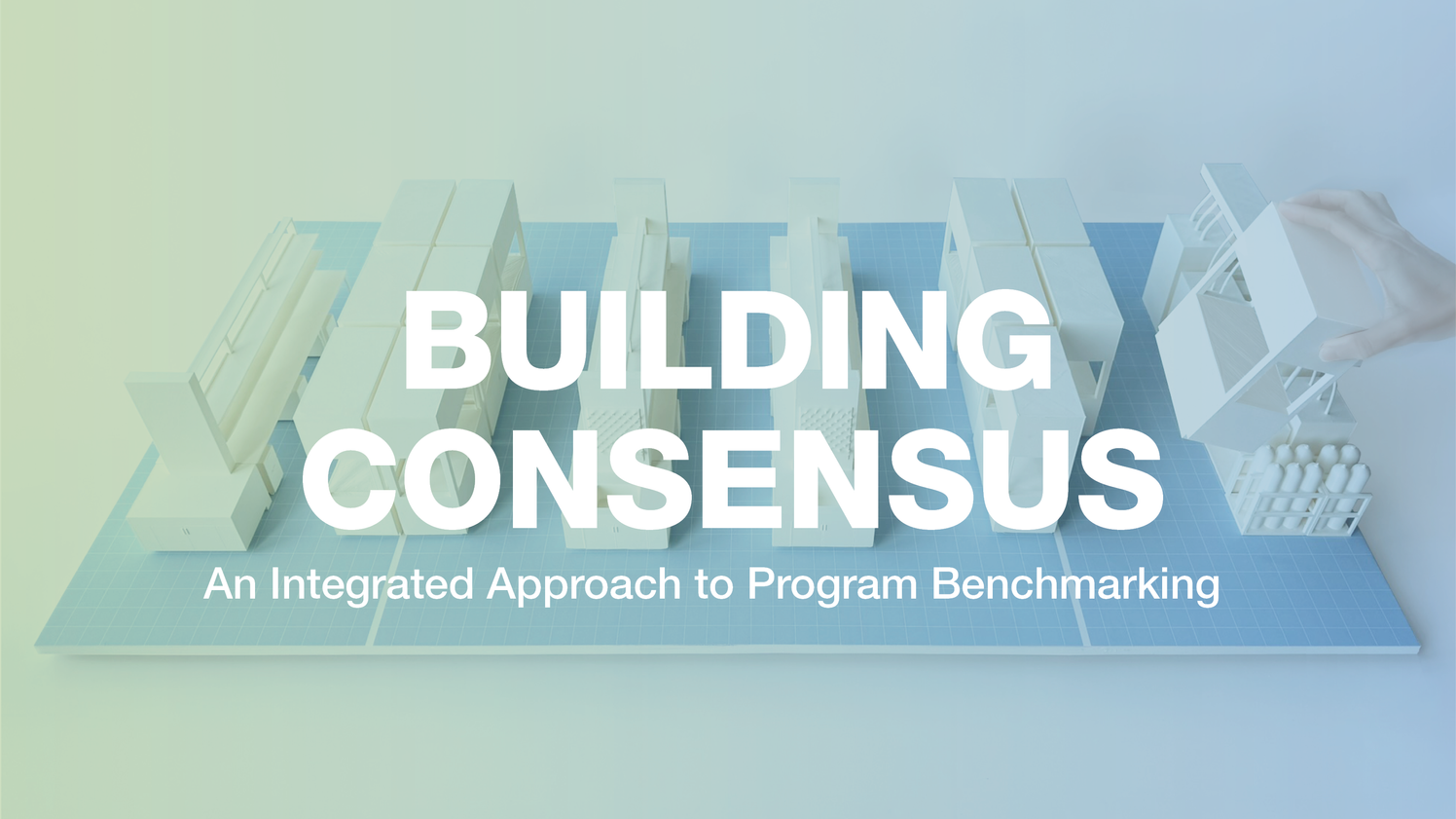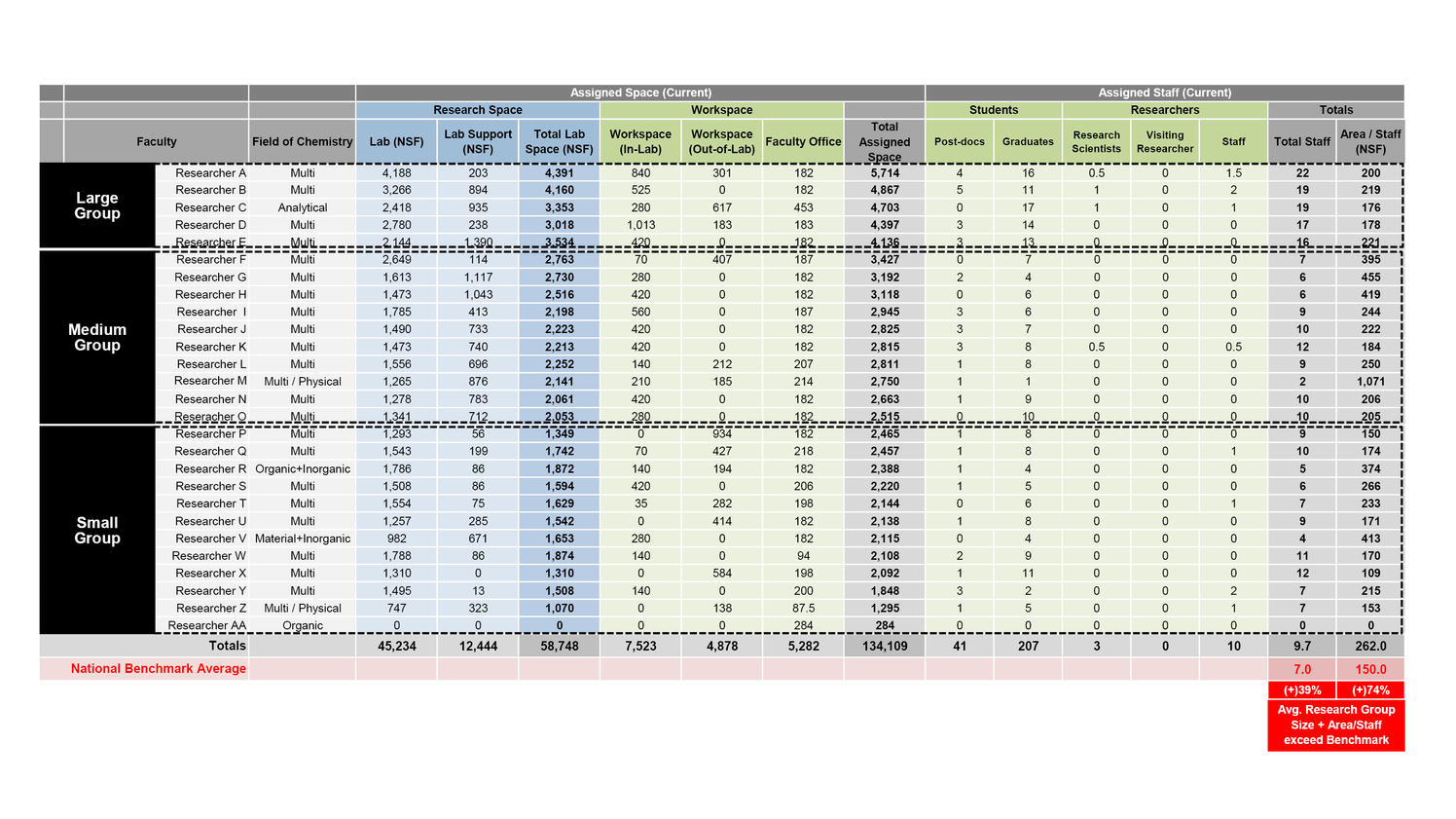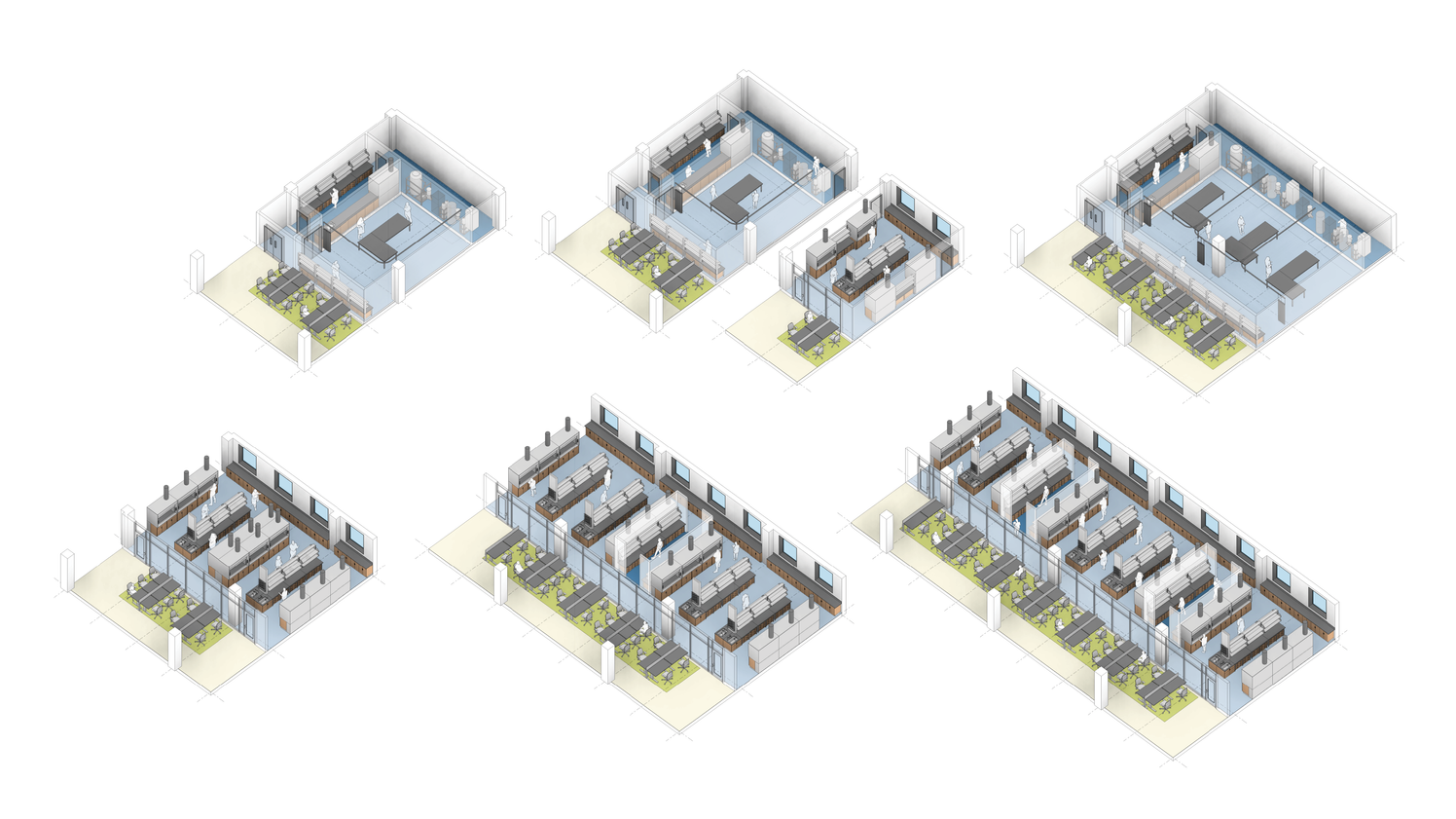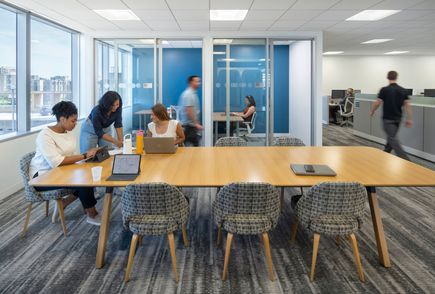Building Consensus: An Integrated Approach to Program Benchmarking
Share

Building consensus within institutions can often be harder than building the building. Our clients tend to be steered by diverse leadership groups containing a broad range of professional expertise. While our institutional clients value this collaborative leadership model, balancing the collective opinions of the group can create a time-consuming challenge.
Program benchmarking is an evidence-based exercise that provides clients with critical insight for defining the vision and goals of a project during the early stages of formation. Typically, the project formation phase is wrought with numerous variables and unknowns that can impede meaningful advancement of a project. Program benchmarking offers a lens of contextual awareness that helps clients to understand their own space planning metrics relative to peer institutions. Understanding these metrics provides the planning team with an opportunity to analyze space trends and optimize the program based on projected development.
Ballinger’s process for program benchmarking includes four key stages:
Collection
Our process starts with collecting data on the use and operation of existing facilities. Collection efforts include quantitative analyses of square footage areas by use and type along with qualitative analyses in the form of user feedback. During this phase, planners immerse themselves within the active workflow and occupation of the existing facilities. This phase of engagement also establishes feedback loops with end users through hosting live in-person visioning workshops, surveys, town halls, and interviews.

Comparision
The data set compiled during the collection phase is then analyzed within the context of peer institutions. The comparison stage establishes an analytical model by harvesting program data from a broad range of project benchmarks aligned with the project type. The comparative analysis tracks key space planning metrics like “Area by Use,” “Cohort Size,” and “Area per Occupant.” This model allows clients to see how their current and projected space allocation relates to known industry benchmarks.

Consultation
While planning metrics tend to be the key driver for programming, it is important to acknowledge that analytical models can overlook nuances of actual use relative to planned intent. Understanding that facilities evolve regularly, it is critical to access the collective lessons learned from peers that have completed comparable projects. The consultation phase establishes relationships with peer institutions in which planning teams can consult with faculty via facility tours and peer interviews. The perspective gained from this feedback helps provide contextual understanding of how space planning data applies to real-world environments and operations.
Calibration
While comparative analysis and peer consultation are useful for attaining a general understanding of how to allocate space for a project, we often find the need to tailor programs to the specific needs and uses of our clients. That process often warrants program test-fits and/or advanced visualization modeling that help clients to make informed planning decisions. This additional level of early phase planning detail pre-invests efforts into assuring clients that the critical building blocks of a program are adequately sized to perform as required.

At Ballinger, we value agile expertise. Contextual awareness is highly informative, but the key is understanding how to adapt the data to unique clients. With this evidence-based approach that integrates space planning and programming, our clients can be confident that the vision and goals of their project is rooted in a deep understanding of precedent, process, and performance.



